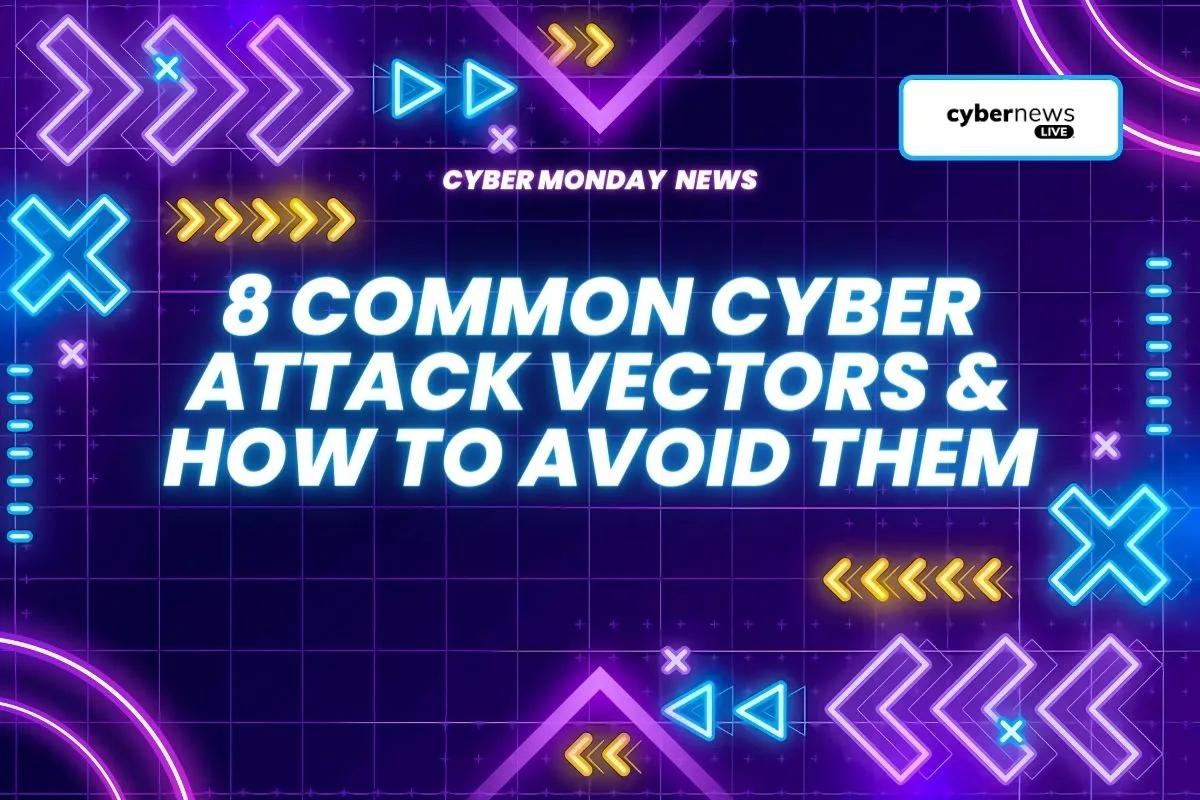
8 Common Cyber Attack Vectors & How to Avoid Them
In this thoughtful article, we explore eight common cyber attack vectors and provide tactical advice to avoid possible dangers. The vectors that have been found include weak and compromised credentials, ransomware and phishing attacks, configuration holes, internal threats, and problems with trust relationships in cyber security. The article outlines preventive measures for each vector in detail, emphasising the importance of strong practices like using strong passwords, two-factor authentication, encryption protocols, careful internal threat monitoring, secure configurations, ransomware protection, phishing awareness, and managing trust relationships effectively. In order to strengthen a strong digital defence, the conclusion emphasises the dynamic nature of online threats and calls for regular software upgrades, maintenance, and deployment of strong security measures.
The internet, once a boundless field of opportunity, has evolved into a busy environment full of unspoken risks. Cyber criminals patrol the digital jungle, equipped with an array of invisible dangers known as attack vectors, much like jaguars do in the Amazon rainforest. These strategies take advantage of holes in our online defences to access our data, steal our money, and cause disruptions in our lives—much like silent vines entangling the unsuspecting. But do not be alarmed, bold adventurer! With knowledge of these eight typical assault vectors and strategies for avoiding them, you may confidently traverse the digital jungle, leaving predators hiding in the shadows.
1. Demystifying Compromised Credentials
The impact? Devastating. These stolen keys grant intruders an insider’s access, bypassing security walls and leaving your data, systems, and even entire networks vulnerable. Think of it as an unlocked back door into your digital house, wide open for unwelcome guests.
But the risk isn’t one-size-fits-all.
A lost account password might be a nuisance, but privileged credentials – think admin keys to critical systems– are like handing over the blueprints to your entire digital fortress. And it’s not just humans holding these keys. Servers, network devices, and even security tools – all have secret passwords, and in the wrong hands, they become tools for navigating your entire network with ease.
Preventive Measures:
- Password Fort Knox: Ditch the predictable, weak passwords like “123456.” Enforce strong password policies that demand complexity, length, and regular updates. Make your passwords the Dobermans guarding your digital gates.
- No Sharing is Caring: Sharing passwords across multiple accounts is like handing out spare copies of your house key. A breach in one service becomes a breach in all. Keep your passwords unique and personal, like fingerprints for your digital life.
- Double Down on Defense: Two-factor authentication (2FA) is like putting an extra lock on your door. It adds layer of security, demanding not just your password, but another verification step like a code from your phone. Make 2FA your best friend in the fight against compromised credentials.
2. Weak Credentials
Recent threats like the Mirai malware attack shine a terrifying light on this vulnerability. It’s not just managed devices that are at risk; the ever-expanding network of internet-of-things (IoT) devices becomes a vast playground for attackers wielding weak passwords as master keys.
But the danger doesn’t lurk only in the shadows. Consider the seemingly harmless apps and protocols traversing your network, whispering login credentials like secrets in the wind. Any malicious actor lurking within can snatch these whispers, transforming them into weapons for lateral movement – snaking through your systems, escalating their access, and wreaking havoc. Remember the Target breach? Stolen Active Directory credentials, pilfered from this seemingly mundane pathway, became the keys that unlocked the very heart of their payment network.
Preventive Measures:
- Become a Password Paladin: Track password hygiene across your entire enterprise, identifying users with weak or reused credentials. Treat them not with punishment, but with education, fostering a culture of strong, unique passwords that stand tall against brute force attacks.
- Shine a Light on Whispers: Monitor your network for apps and protocols transmitting login credentials in plain sight. Encrypt these communications, cloaking them in an impenetrable veil, ensuring that sensitive information never becomes an open invitation for attack.
3. Internal or Cyber Attacks
An internal threat arises when an employee exposes confidential company information or exploits vulnerabilities within the organization. Typically, these threats are associated with disgruntled employees who, due to various reasons, may engage in activities harmful to the company. Users with access to sensitive data and networks have the potential to cause substantial damage through privileged misuse and malicious intent.
Preventive Measures:
- To mitigate these risks, it is crucial to identify and monitor disgruntled employees. Additionally, implementing robust monitoring systems for data and network access across all devices and users can help in detecting and addressing potential internal threats proactively.
4. Encryption Vulnerabilities
Missing or inadequate encryption practices pose a significant threat to data security. Encryption involves converting data into a coded form, accessible only to those with the correct key or password. This safeguards digital data confidentiality during storage and transmission. Effective encryption must be implemented for data at rest, in motion, and, when applicable, during processing.
When encryption is missing or poorly executed, sensitive information, including credentials, may be transmitted in plaintext or using weak cryptographic cypher’s or protocols. In such cases, adversaries intercepting data storage, communication, or processing may exploit these vulnerabilities, gaining access to sensitive data through brute-force attacks on weak encryption.
Preventive Measures:
- Avoid relying solely on low-level encryption or assuming that compliance alone ensures secure data encryption.
- Implement robust encryption practices to ensure that sensitive data is securely encrypted when at rest, during transmission, and while in processing.
5. Configuration Weakness
Configuration errors, commonly known as misconfiguration’s, occur when there are mistakes in the system setup. For instance, enabling setup pages or using default usernames and passwords can create vulnerabilities that may lead to security breaches. When setup or application server configurations are not appropriately disabled, hackers can identify concealed vulnerabilities, providing them with valuable information. Misconfigured devices and applications become susceptible entry points for potential attackers.
Preventive Measures:
- Implement robust procedures and systems to enhance the configuration process, leveraging automation where applicable.
- Regularly monitor application and device settings, comparing them against recommended best practices to identify and rectify misconfigurations across the network.
6. Ransomware Threat
Ransomware poses a serious cyber-extortion threat, preventing users from accessing their data until a ransom is paid. Victims receive instructions on how to pay a fee in exchange for the decryption key, with costs varying from a few hundred dollars to thousands, typically payable in cryptocurrencies like Bitcoin.
Preventive Measures:
- Implement comprehensive systems to safeguard all devices against ransomware, emphasizing the importance of keeping the operating system patched and up-to-date. This minimizes vulnerabilities available for exploitation.
- Exercise caution by refraining from installing software or granting administrative privileges unless a clear understanding of its purpose and functionality is established.
7. Phishing Threat
Phishing stands as a prevalent cyber crime tactic where individuals are contacted via email, telephone, or text message by perpetrators masquerading as legitimate institutions. The goal is to entice targets into divulging sensitive data, including personally identifiable information, banking details, credit card information, and passwords. Despite its deceptive simplicity, phishing remains among the most effective social engineering attack vectors. Even sophisticated schemes, as demonstrated by the Office of Personnel Management (OPM) hack, can circumvent traditional security layers such as email gateways and endpoint controls.
Preventive Measures:
- Gain valuable risk insights for your enterprise by monitoring web browsing and email click-through behaviour for both users and devices.
- When uncertainty arises, it is prudent to contact the purported organization directly via phone to verify the legitimacy of the received email and ascertain whether it is a phishing scam.
8. Trust Relationships in Cybersecurity:
Within the field of cyber security, trust connections refer to a particular degree of confidence that has been built up between people and systems. Situations where two domains are linked, enabling users to log in once and access resources without difficulty, serve as examples of this linkage.
The trust relationship is made up of the trusted domain, which uses the trusted domain’s authentication to allow access to resources without requiring the user to authenticate again, and the trusted domain, which is in charge of performing the initial user authentication. Credentials cached on the trusted client represent a possible breach that might have serious consequences if exploited.
Preventive Measures:
- Effective management of trust relationships is crucial for minimizing or eliminating the impact and potential damage caused by attackers.
- Implementing a zero-trust security practice, exemplified by Google’s BeyondCorp, can serve as a robust model for enhancing security in trust relationship scenarios.
Conclusion
Keep in mind that the internet is a dynamic jungle where new risks, like predators wearing disguises, always emerge. Your machete is alertness, and your shield is vigilance. Remain up to date on the latest attack vectors, update your software frequently, and put strong security measures in place like two-factor authentication and strong passwords. By using these strategies, you may create a strong virtual wall that will withstand the cunning attempts of online thieves. You can confidently explore the digital wilderness, knowing that your stronghold is resilient to any hidden threats. You can go freely and securely through the online world with information as your guide and prudence as your compass, leaving the predators of the cyber jungle crying in frustration.
CTA
Discover how to defend against online dangers! Examine the 8 Common Cyber Attack Vectors guide and use Cyber News Live to strengthen your online security.




